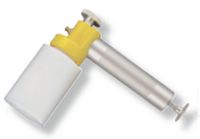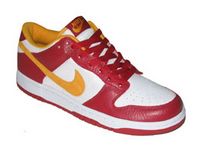Finding No Likely Confusion or Dilution, TTAB Dismisses Nike's Opposition To "NIKEPAL"
Despite finding the NIKE mark famous both for Section 2(d) and Section 43(c) purposes, the Board dismissed Nike's opposition to registration of the mark NIKEPAL for "import and export agencies and wholesale distributorships featuring scientific, chemical, pharmaceutical, biotechnology testing instruments and glassware for laboratory use, electrical instruments, paper products, and household products and cooking appliances." Nike Inc. v. Nikepal Int'l Inc., Opposition No. 91124869 (April 21, 2005) [not citable].

Opposer Nike pleaded ownership of 29 registrations for the mark NIKE, both alone and combined with other words, mostly for athletic footwear and clothing. Its staggering sales ($57 billion during the period 1979-2003) and advertising figures ($10 billion during the same period), its association with such famous athletes as Tiger Woods, Michael Jordan, Derek Jeter, and Mia Hamm, and the ranking of the NIKE mark as the 33rd most valuable brand in the world, led the Board to conclude that, for purposes of the Section 2(d) du Pont analysis, NIKE is a famous mark entitled to "substantial weight" and to a "broad scope of protection against competing marks."
The Board found the marks NIKEPAL and NIKE to be similar in sound, appearance, connotation, and overall commercial impression. However, "the significant differences in the parties' respective goods and services" led the Board to conclude that confusion is not likely.
Nike contended that the "paper products," "household products," "cooking appliances," and "electrical instruments" included in Nikepal's application could encompass items that the public would associate with Nike: e.g., Nike uses its mark on posters, binders, student planners, notebooks, and portfolio covers, as well as on many promotional items, like pens, pencils, cups, mugs, name tags, and flying discs. Thus, Nike argued, consumers may associate paper products, household products, and even some electrical instruments and cooking appliances, with Opposer and may believe that the NIKE mark has been licensed for these products.
The Board, however, wasn't buying: "The problem with opposer's argument is that applicant's application does not cover electrical instruments, paper products, cooking appliances, and household products themselves, but rather import, export and distribution services featuring these products." [emphasis in original]. The Board observed that the record contained no evidence on which to conclude that consumers would assume that the involved goods and services emanate from the same source. Nor did Nike offer any evidence that Nikepal's services represent a natural area for the collateral use of the NIKE mark. Therefore, the Board concluded that Nike's goods and services and Nikepal's services are not related.

Turning to the issue of dilution, the Board had "no hesitation" in finding that the NIKE mark meets the "truly famous" standard of Toro Co. v. ToroHead Inc., 61 USPQ2d 1164, 1178 (TTAB 2001). However, the marks NIKE and NIKEPAL are not substantially similar, as required for dilution purposes. Id. at 1183. The addition of the term PAL "results in a mark which has a sufficiently different overall commercial impression." Consequently, the Board found that "there is no dilution."
TTABlog comment: In 2003, the fame of the NIKE mark carried Nike to a questionable Section 2(d) victory in Nike Inc. v. Pleasures of the Table, Inc., Opposition No. 115,293 (July 10, 2003) [not citable]. (The Board declined to reach the dilution issue). Applicant Pleasures sought to register the mark NIKE in the design form shown below -- which included a depiction of a statute of Nike, the Greek goddess of victory -- for restaurant and catering services. The Board found confusion likely:
". . . in view of the evidence that opposer in fact operates a food service at its conference centers under the NIKE mark . . . we find that this service is a logical expansion of opposer's business, certainly of its events and convention center services, into obvious collateral services."

That decision led me to wonder whether the owner of a famous mark should even bother to raise a dilution claim -- with its onerous evidentiary requirements -- since the owner could expect very broad protection for its mark under Section 2(d). See pages 17 and 18 of my article entitled "Dilution at the TTAB: What to Prove and How to Prove It."
TTABlog update: On July 21, 2005, Nike, Inc. filed a civil action (No. 05-01468) in the U.S. District Court for the Eastern District of California, seeking review of the Board's decision pursuant to Section 1071(b) of the Trademark Act.
Text ©John L. Welch 2005. All Rights Reserved.




0 Comments:
Post a Comment
<< Home